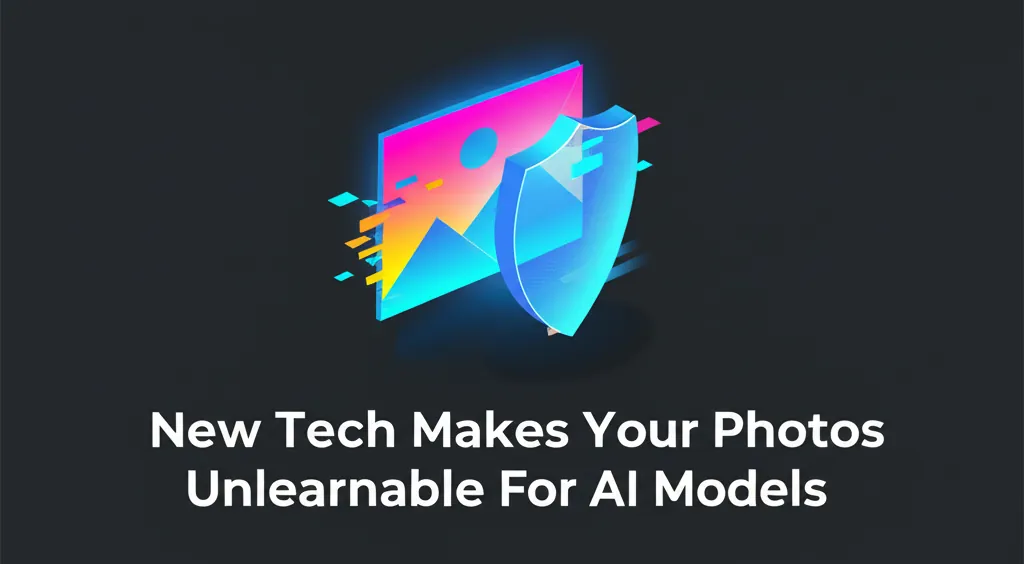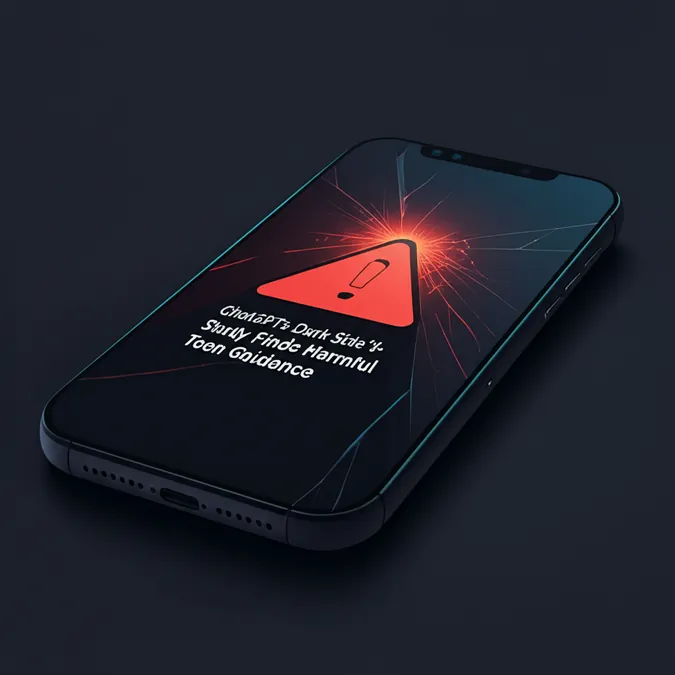The Cognitive Cost of Writing With AI
The Socratic Fear A Modern Dilemma
Did you know that Socrates, one of history's greatest philosophers, was wary of writing? He worried it would damage our memory and understanding, making us lazy and inattentive. As the pop science channel Talking Heads points out, this ancient concern echoes modern debates about computers, smartphones, and now, artificial intelligence.
Almost overnight, tools like ChatGPT have revolutionized writing. This rapid change forces us to ask a Socratic question: How is this technology changing not just our work, but our very minds? A groundbreaking paper from the MIT Media Lab, titled "Your Brain on ChatGPT," delves into this, and the findings suggest our ancient philosopher might have been onto something.
Inside the MIT Lab Your Brain on ChatGPT
Nataliya Kos-Myna, lead researcher on the study, was inspired to investigate after seeing her own students using ChatGPT and receiving emails from people claiming the technology was affecting their cognition. Her team at the MIT Media Lab set out to measure what happens in the brain when we use AI to write.
The experiment involved 54 students from the Greater Boston area. They were tasked with writing a 20-minute essay on broad, SAT-style topics like "what is the perfect society?" to avoid reliance on expert knowledge. The students were split into three groups:
- The Brain-Only Group: Permitted to use nothing but their own minds.
- The Google Group: Allowed to use the Google search engine but no AI chatbots.
- The ChatGPT Group: Restricted to using only ChatGPT for assistance.
Researchers monitored the students using electroencephalography (EEG) caps to measure brain activity non-invasively. They also analyzed the final essays for quality and content, and two English teachers, unaware of the study's conditions, graded the work. Finally, students were asked questions to gauge their retention, such as being asked to quote what they had just written.
Mapping the Mind How AI Changes Brain Activity
The most striking results came from the EEG data, which measured brain connectivity—how much different parts of the brain "talk" to each other.
Kos-Myna explains that the Brain-Only group showed the most widespread and active brain connectivity. The activity was all over the brain—front to back, hemisphere to hemisphere. This makes sense; without external tools, the brain is on fire, working hard to access memories, structure thoughts, and choose words.
The Google group showed less connectivity than the brain-only group, but still a significant amount, particularly in the visual cortex at the back of the head, which aligns with the process of navigating multiple tabs and synthesizing information.
However, the ChatGPT group displayed the least amount of brain connectivity. This doesn't mean their brains "went on vacation," but that the neural chatter associated with deep cognitive processes was significantly reduced. This is critical because, as Kos-Myna notes, the brain regions showing reduced activity are responsible for creative thinking, critical thinking, episodic memory, and language development.
More Than Just Brainwaves The Impact on Writing Itself
The differences weren't just in the brain scans; they were evident on the page. Analysis of the essays revealed that the work from the ChatGPT participants was remarkably homogenous.
The essays of ChatGPT participants were very homogenous. What it means is that they used very similar vocabulary.
For example, when writing about happiness, the ChatGPT group consistently focused on vocabulary related to careers. In contrast, the Google group used words related to "giving," and the brain-only group used words related to "true happiness." The technological assistance seemed to funnel thoughts down a more uniform path.
The human graders noticed this too. Without knowing which essays belonged to which group, they often asked if certain students had been sitting next to each other because their writing was so similar. Interestingly, the teachers could identify the unique writing style of an individual across multiple essays, a nuance that AI analysis missed.
The Brain as a Muscle Effort and Learning
Barry Gordon, director of cognitive neurology at Johns Hopkins University, explains that these findings align with what we know about how the brain learns. He emphasizes that the mental effort of generating ideas is what matters most.
The brain in many ways is like a muscle. Actually, many of the same things that work with training, work with the brain. ... You have to use it or lose it.
Engaging more of your brain—through thinking, word choice, and structuring arguments—leads to deeper processing and better learning. This concept is supported by evidence from stroke rehabilitation, where patients relearn motor functions more effectively when the task involves the whole body, not just an isolated limb. The brain seems to recognize when a task is important and invests more resources in learning it.
The Power of the Pen Handwriting vs Keyboards
This idea of whole-brain engagement is further supported by research on a more familiar technology: the pen. Audrey van der Meer, a professor at the Norwegian University of Science and Technology, conducted studies comparing handwriting to typing.
We actually looked at the connectivity patterns in the brain during handwriting and typewriting, and we found that the brain is much more connected during handwriting than it is during typewriting.
Using EEG nets on students playing Pictionary, her team found that the complex motor control of handwriting engages more brain regions involved in learning and memory. Handwritten notes are also more personal, helping to cement memories of the context in which they were taken.
A Glimmer of Hope The Right Way to Use AI
Lest the findings sound entirely like doom and gloom, the MIT study had a fascinating second phase. Researchers swapped the groups: brain-only participants were given ChatGPT, and ChatGPT users had the tool taken away.
The results were revealing. The students who had previously relied on ChatGPT never reached the same level of brain connectivity as the original brain-only group, even when forced to work without it.
However, the brain-only participants who were then given access to ChatGPT showed significantly higher brain connectivity than even the original brain-only group. Having first done the hard mental work, they used the AI not as a crutch, but as a sophisticated tool for information-seeking and refinement. They were twice as likely to ask for information and four times less likely to ask the AI to simply write the essay for them.
This suggests that timing is critical. AI can be a powerful cognitive enhancer, but only after a user has developed the underlying skills and expertise through their own effort.
The Cognitive Debt Memory and Ownership
A concerning side effect for the original AI group was a dramatic drop in retention. An astonishing 83% of participants in the ChatGPT group couldn't quote a single line from their essay just 60 seconds after submitting it. In contrast, the brain-only group was so engaged that they could often recite large portions of their work verbatim.
Furthermore, 15% of the ChatGPT users reported feeling no ownership over their essays, creating a dangerous disconnect between the writer and the work.
A Path Forward Expert Advice for the AI Era
The consensus among experts is not to abandon AI, but to use it wisely. Ethan Mollick of the Wharton School suggests a powerful strategy: write your own draft first, then use AI as an editor, a research assistant, or a sparring partner to generate new ideas. Barry Gordon agrees, noting that while our brains are wired to be lazy, we must consciously put in the effort to reap lasting benefits.
The most significant concern, raised by Nataliya Kos-Myna, is for the next generation.
We should all be concerned, ask important questions about is ... younger adults, teenagers, kids, this new upcoming generation, are they all really fully set on learning how to extract information, work through information?
Those who are already experts know how to draft, research, and question. The challenge is ensuring that young people develop these foundational skills before they offload their thinking to a machine. As thousands of teachers have expressed to Kos-Myna's team, the key is not to ban the technology, but to thoughtfully integrate it into education, empowering students to think critically first and use AI as a tool to amplify that thinking, not replace it.


